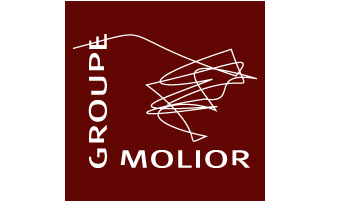Peripheral Response
Project Description
Peripheral Response is a responsive installation, which uses the body’s peripheral nervous system as a launching point for an exploration of how the body relates to its environment. As a starting point for this installation, I used the human Cutaneous sensory system, or the receptors in the skin that convert external data into nervous impulses, which feed information about the world to the central nervous system. To echo this visually, I place the wires, interfaces, and objects throughout the exhibition space to create a visual network. The network of wires spills out of the walls, and across the floor, referencing drawings or medical photographs of the neural network. The placement of the wire both unifies the objects with each other, as well as the objects to the exhibition space. The exposed fragile system references both the body and the room’s electrical system.
The installation is comprised of 9 objects, which articulate robotically mimicking Mores Code. Each object has a solenoid, which mechanically pushes down an arm with a tap from a tap shoe fastened to it. In addition, the objects have multiple sensing devices, such as sonar and infrared, used to track not only the viewer’s location, but also the distance of the viewer from each object. The objects respond to the viewer’s location and articulate at different rates, according to rules established in the patch. Included in the installation are two homemade interfaces, which communicate through midi to Pure Data.
When the participant completes the circuit of information exchange, the elements respond creating a relationship with the viewer audibly following them as they move through the room. The resulting soundscape evokes a system of communication that invites the viewers to insert themselves into a communicative model. The resulting system of exchange is a physical encounter, where viewer’s body becomes guest. As one moves through the space, the ripple effect caused by their presence calms and the installation settles.
Video
Download the Tech Rider here
Upcoming Exhibitions
Past Exhibitions:
- The Age of Catastrophe, (invited) Curator: Dr. Melentie Pandilovski. Actual Contemporary Art, produced by Video Pool Media Arts Centre, Wpg. MB. CA. 2015.
- Despertar/Éveil/Alive, (invited) Curator: Sylvie Parent. Produced by Groupe Molior and Automatica. SESC SANTANA. São Paulo, Brazil. (catalogue produced). 2014.
- Nuit Blanche and Toronto Art Fair Toronto, Curator: New Adventures in Sound Art (NAISA). The Gladstone, Toronto, ON. CA. 2008.
- Corps habité / The Inhabited Body (three-artist exhibition), Curator: Anrée Duchaine. Group Molior exhibition space at 661Rose-de-Lima, Montreal, QC. CA. 2007.
- Robo Co-op, presented by ELEKTRA and Usine C. Montreal All-Nighter, Curator: Simon Laroche. Usine ‘C’, Montréal, QC. CA. 2007.
- Break 2.3 “New Species”, (selected) Curators: Polona Tratnik. Slovenia, EU. (Catalogue produced). 2005.
Press
- peripheral-response-Molior-PR-FR
- peripheral-response-Molior-PR-EN
- peripheral-response-Molior-BRT-EN-FR






